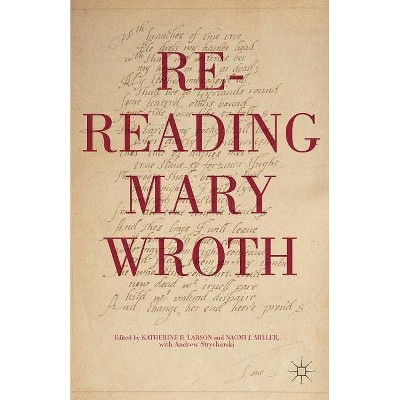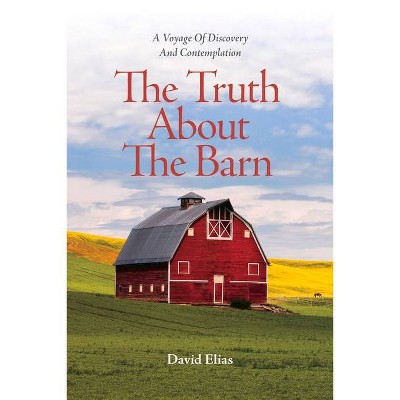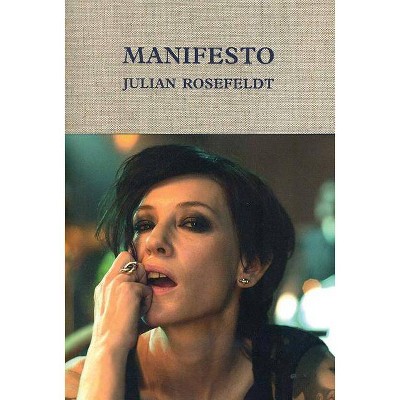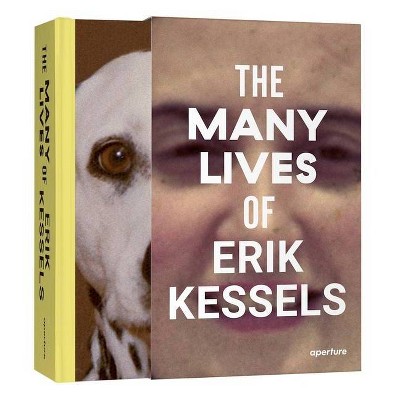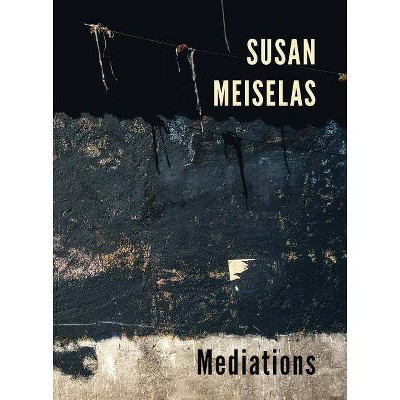Reading Cy Twombly - Annotated by Mary Jacobus (Hardcover)

Similar Products
Products of same category from the store
AllProduct info
<p/><br></br><p><b> Book Synopsis </b></p></br></br><p><b>The first book on the central importance of literary sources in the paintings of Cy Twombly</b> <p/>Many of Cy Twombly's paintings and drawings include handwritten words and phrases--naming or quoting poets ranging from Sappho, Homer, and Virgil to Mallarmé, Rilke, and Cavafy. Enigmatic and sometimes hard to decipher, these inscriptions are a distinctive feature of his work. <i>Reading Cy Twombly</i> poses both literary and art historical questions. How does poetic reference in largely abstract works affect their interpretation? <p/><i>Reading Cy Twombly</i> is the first book to focus specifically on the artist's use of poetry. Twombly's library formed an extension of his studio and he sometimes painted with a book open in front of him. Drawing on original research in an archive that includes his paint-stained and annotated books, Mary Jacobus's account--richly illustrated with more than 125 color and black-and-white images--unlocks an important aspect of Twombly's practice. <p/>Jacobus shows that poetry was an indispensable source of reference throughout Twombly's career; as he said, he never really separated painting and literature. Among much else, she explores the influence of Ezra Pound and Charles Olson; Twombly's fondness for Greek pastoral poetry and Virgil's <i>Eclogues</i>; the inspiration of the <i>Iliad</i> and Ovid's <i>Metamorphoses</i>; and Twombly's love of Keats and his collaboration with Octavio Paz. <p/>Twombly's art reveals both his distinctive relationship to poetry and his use of quotation to solve formal problems. A modern painter, he belongs in a critical tradition that goes back, by way of Roland Barthes, to Baudelaire. <i>Reading Cy Twombly</i> opens up fascinating new readings of some of the most important paintings and drawings of the twentieth century.</p><p/><br></br><p><b> From the Back Cover </b></p></br></br><p>"This is a beautiful and challenging book. Mary Jacobus takes us into the heart of Cy Twombly's practice, his reading, editing, remembering, and remaking of poetry from Homer and Virgil to Rilke and Paz. In doing so, she illuminates Twombly in new and remarkable ways. I loved it."<b>--Edmund de Waal, artist and author of <i>The Hare with Amber Eyes</i></b></p><p>"In this brilliantly erudite and illuminating study, Mary Jacobus, who is in the front rank of contemporary critics, addresses the languages of paint as well as poetry. As she investigates how Twombly's use of quotation both complements and immensely deepens the power of his visual images, she takes us right to the heart of his doubly articulate genius."<b>--Andrew Motion, UK Poet Laureate, 1999-2009</b></p><p>"The scrawled quotations, ruins of mythic poetry, and trailing verbal scribbles in Cy Twombly's work have fired Mary Jacobus to shape an enraptured yet scrupulously precise conversation with the artist's imaginative world. Her deep literary knowledge, fine close readings, subtle psychoanalytical insights, and sheer sensuous delight in paint and color and stroke and rhythm combine here to create a rare and beautiful work of aesthetic philosophy."<b>--Marina Warner, author of <i>Stranger Magic: Charmed States and the Arabian Nights</i></b></p><p>"Many who are not art historians have written about Cy Twombly, but precious few with Mary Jacobus's rigor or fresh perspective. Her examination of Twombly's annotated personal library has turned up revelatory details about his practices of reading, notating, and editing; the sometimes quite literal proximity of book to canvas; and more. Jacobus has done profound work and her book is enormously enriching."<b>--Kate Nesin, author of <i>Cy Twombly's Things</i></b></p><p>"Illuminating and wide-ranging, this is a very significant book. Mary Jacobus's access to Cy Twombly's annotated personal library enables her to speak with unprecedented authority on the literary sources that the artist used."<b>--Stephen Bann, author of <i>Distinguished Images</i></b></p><p/><br></br><p><b> Review Quotes </b></p></br></br><br>[A] fresh and intricate study of Twombly's citations and overall engagement with verse. . . . [Jacobus] profitably confronts Twombly's work as a literary critic . . . enriching the work with themes of memory, time, concealment, sexuality, translation, and what she describes at one point as, 'the inexhaustible relation of image and text--distinct, yet propped on one another.'<b>---James Miller, <i>Hyperallergic</i></b><br><br>[D]azzles both visually and intellectually. . . . A fascinating exercise in elucidation.<b>---Bill Marx, <i>Arts Fuse</i></b><br><br>[Jacobus'] book is the most rigorous, sustained and challenging investigation of Twombly's engagement with the literary texts of antiquity, the Enlightenment and the Modern Canon. . . . Penetrating and illuminating. . . . By the end of her book, the reader who follows her argument has the tools necessary to engage fully with one of the most complex and challenging artists of the post-war period.<b>---Jon Bird, <i>Cambridge Humanities Review</i></b><br><br>A fine example of literary scholarship inspired by art.<b>---Michael Bird, <i>The Telegraph</i></b><br><br>In the book, erudite and descriptive passages show how poetry became central to Twombly. Jacobus illuminates the import of one medium on another, going beyond drawing an affinity between art and poetry to reveal Twombly as an artist engaged in deep study who sought not just correspondences between the mediums, but unity.<b>---Michael Abatemarco, <i>Santa Fe New Mexican</i></b><br><br>Jacobus . . . assesses with great acumen what Twombly's aims were, and shows brilliantly how he combines the various poetic motifs in his painting.<b>---Marjorie Perloff, <i>Times Literary Supplement</i></b><br><br>Jacobus successfully opens up new interpretations of many of Twombly's most renowned works.<b>---Peter Gillies, <i>Stride Magazine</i></b><br><br>Jacobus' careful reading and broad learning, her understanding of Twombly's art and the poetry he included in it, and her synthetic discussion of literature and art in various periods and genres--her chapter on pastoral is especially breathtaking--all make this a complex, stunningly memorable book.<b>---Elizabeth Greene, <i>Times Higher Education</i></b><br><br>Mary Jacobus . . . carries us on a marvellous voyage through the artist's mind and beyond.<b>---Marina Warner, <i>Observer</i></b><br><br>One of The Times Literary Supplement's Books of the Year 2016, chosen by Andrew Motion<br><br>Passionate, informed and thorough.<b>---Kenneth Baker, <i>The Art Newspaper</i></b><br><br>Polished and lusciously illustrated. . . . Perhaps the greatest joy when encountering this material for the first time is Jacobus' insights into the messy, paint-splattered 'Twombly anthology'.<b>---Matthew Holman, <i>Oxford Art Journal</i></b><br><br>Through unprecedented access to his notebooks and annotated sources--a vast pool encompassing everything from Homer to Pound--Jacobus elegantly illuminates the complex relationship between word and image in an oeuvre that teems with potentiality and impropriety.<b>---Lucy Watson, <i>Financial Times</i></b><br><br>A gripping and revelatory study.<b>---Andrew Motion, <i>Times Literary Supplement</i></b><br><br>A highly original study.-- "Apollo Magazine"<br><br>In this erudite book, Jacobus focuses on the poetic and literary allusions and the depth of thinking that went into Twombly's work. . . . The book includes excellent color reproductions, though they are small so do not communicate the impact of Twombly's huge paintings. Jacobus's book will be valuable for those interested in the literary sources for Twombly's art.-- "Choice"<br><p/><br></br><p><b> About the Author </b></p></br></br><b>Mary Jacobus</b> is professor emerita of English at the University of Cambridge and Cornell University, and an Honorary Fellow of Lady Margaret Hall, University of Oxford. She has written widely on visual art, Romanticism, feminism, and psychoanalysis. Her recent books include <i>The Poetics of Psychoanalysis</i> and <i>Romantic Things</i>. She lives in Ithaca, New York, and Cambridge, UK.
Price History
Price Archive shows prices from various stores, lets you see history and find the cheapest. There is no actual sale on the website. For all support, inquiry and suggestion messagescommunication@pricearchive.us








